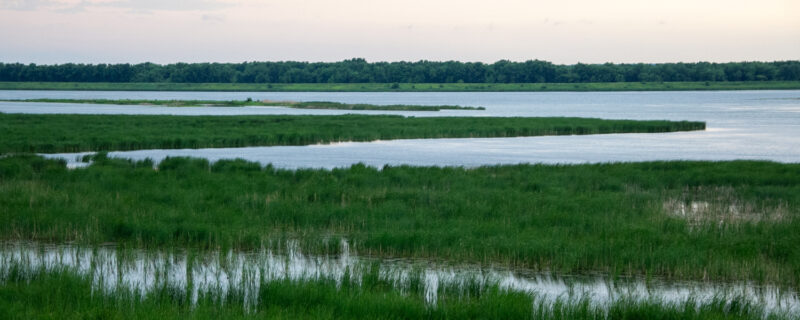
As climate change continues to intensify, communities across Illinois and the country are facing increased risks of flooding, pollution, and habitat loss. One powerful solution lies in Green Infrastructure — nature-based systems that help manage stormwater by harnessing the natural processes of soil and vegetation.
By preserving, restoring, and mimicking natural hydrology, Green Infrastructure reduces stormwater runoff, filters rainwater, and can even harvest it for future use. This not only protects our waterways but also bolsters the resilience of our communities.
Why Green Infrastructure Matters
When rain falls on impervious surfaces like roads, rooftops, and sidewalks, it can’t soak into the ground. Instead, it rushes into storm drains, picking up pollutants such as oil, pesticides, and trash along the way before flowing into our rivers and lakes. This surge of polluted water places tremendous stress on sensitive watersheds, increasing the risk of flooding and water contamination.
By contrast, Green Infrastructure systems, like rain gardens and bioswales, slow down and treat stormwater right where it falls. These systems allow water to percolate through the soil, where it is naturally filtered and absorbed, keeping pollutants out of our waterways.
According to the United States Environmental Protection Agency, localized and riverine flooding is expected to become more frequent in the coming years. However, Green Infrastructure can help mitigate these impacts by reducing runoff and managing excess water flow.
Building Resilient Communities
In addition to reducing pollution and flooding, Green Infrastructure enhances biodiversity by creating habitats for pollinators and wildlife. Native plants, with their deep root systems, play a critical role in these systems. Their roots not only filter pollutants but also store large amounts of water, helping to prevent flooding during heavy rainfall events. These plant systems create vibrant green spaces that support bees, butterflies, and birds, while also improving community aesthetics and overall environmental health.
Illinois’ Commitment to Green Infrastructure
To support these efforts, the Illinois Environmental Protection Agency has announced the Green Infrastructure Grant Opportunity.
This program is designed to help communities implement best management practices (BMPs) that reduce stormwater runoff, improve water quality, and prevent flooding. The IEPA is offering $5,000,000 in funding for eligible projects with reimbursement awards ranging from $75,000 to $2,500,000. A 25% local match is required, and applications are due by November 20, 2024.
Examples of Eligible Projects
Green Infrastructure comes in many forms, each tailored to a community’s specific needs. Some examples of eligible projects include:
- Biofiltration: Using vegetation like bioretention ponds and bioswales to filter stormwater.
- Retention/Infiltration: Projects such as permeable pavements that allow water to soak into the ground.
- Detention Ponds: Creating or retrofitting detention basins to store and treat stormwater.
- Wetland Creation: Establishing or modifying wetlands to slow runoff and filter pollutants.
- Floodplain Reconnection: Reconnecting rivers and streams to their floodplains to naturally manage water.
- Watershed-Wide BMPs: Smaller-scale projects like rain gardens and tree boxes spread throughout a watershed.
- Rainwater Harvesting: Capturing and storing rainwater for later use through systems like rain barrels.
These systems not only offer flood protection but also contribute to long-term water quality improvements, benefiting communities for generations to come.
How to Get Involved
If your community has been impacted by flooding or you’re interested in implementing a Green Infrastructure project but don’t know where to start, there are resources available to help. Prairie Rivers Network and its partners offer technical assistance and educational opportunities.
For instance, our Great Lakes Thriving Communities Webinar: Funding Opportunities for Energy and the Environment is a great place to learn more about potential funding sources. You can also request tailored guidance through the Great Lakes Thriving Communities Technical Assistance Center.
By investing in Green Infrastructure today, we can safeguard our communities and natural resources for the future. Apply for the Illinois EPA’s Green Infrastructure Grant and take the first step toward a more resilient and sustainable future.Interested in learning more? Visit Prairie Rivers Network’s website for additional resources and updates on environmental protection efforts across Illinois.







